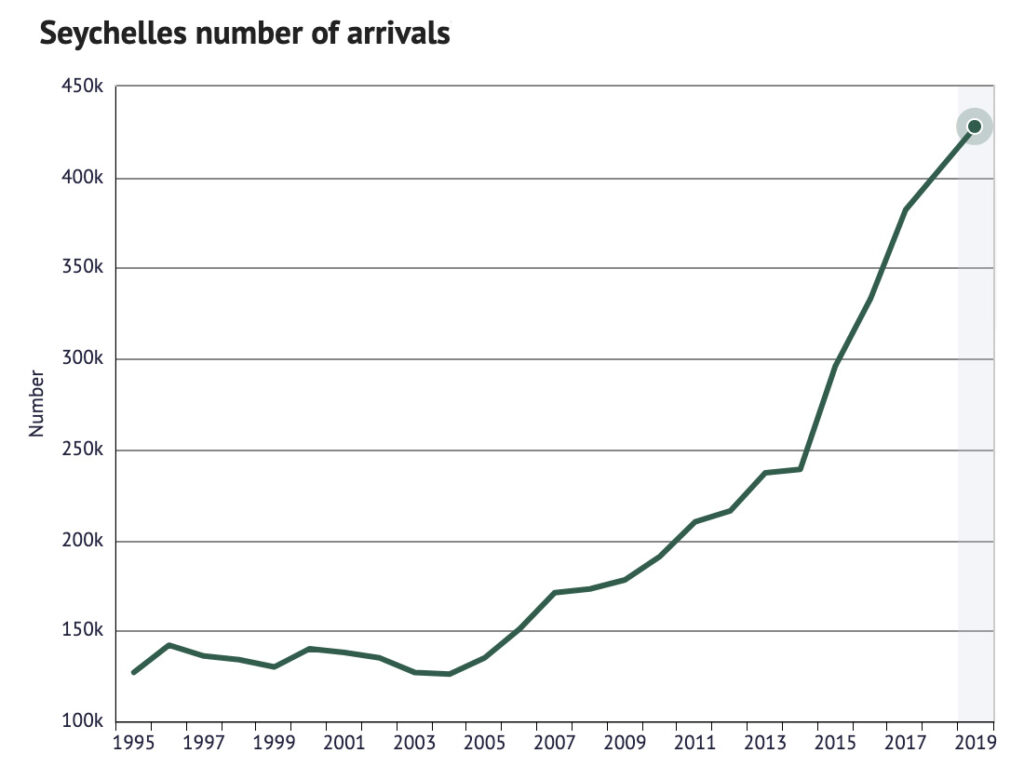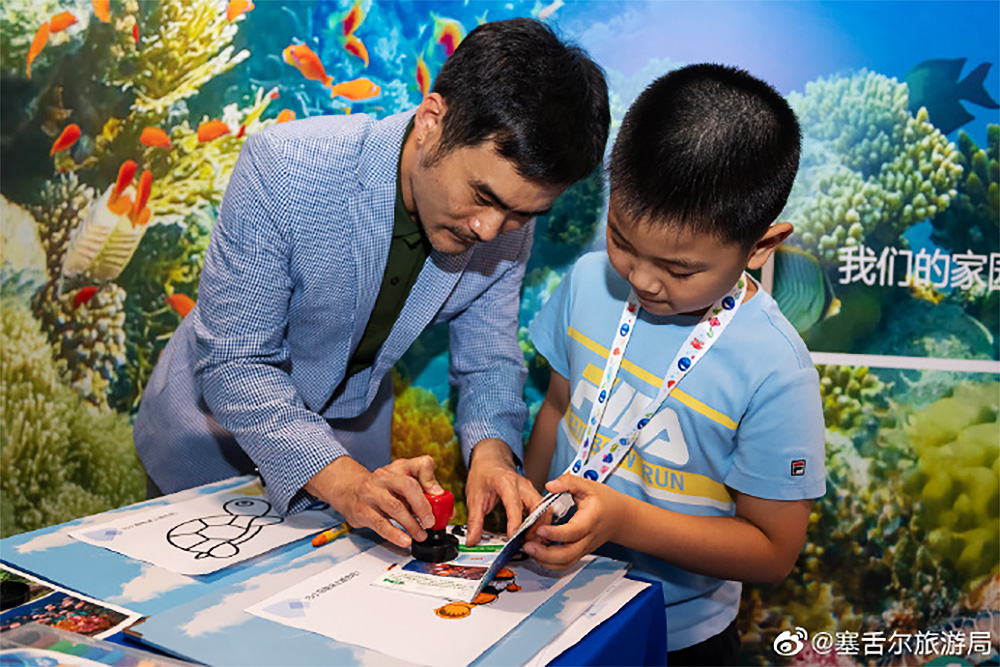Until the mid-1970s, the crystalline waters and mountain rainforests of the Seychelles were relatively unknown beyond the Indian Ocean archipelago. Obscurity disappeared rapidly upon the completion of an international airport and tourism soon became a key economic pillar. By the early 2010s, tourists were contributing upwards of $500 million each year with particularly strong and sustained enthusiasm from Western European travelers.
Around the same time, Seychelles began to diversify its portfolio to connect with emerging markets, including China. The ground had been laid with the establishment of diplomatic relations in 1976, which included making Seychelles a visa-free destination for Chinese travelers. Within a few years, seasonal direct flights from Beijing and Chengdu was driving more more than 15,000 per year to the country, making China the sixth largest source market.

International arrivals to Seychelles has risen sharply since the mid-2010s, hitting a high of 428,000 in 2019. Image: Knoema
Seychelles Tourism Board has spearheaded the country’s push into China and as the Regional Director for China and Japan, Jean-Luc Lai-Lam, explains, there’s room for growth in a market increasingly keen on exploring new, niche destinations.
Seychelles’ pre-pandemic campaigns

Seychelles was featured in three episodes of Feel The World. Image: Seychelles Tourism Board
Seychelles had relied on a blend of B2C and B2B activities to grow its stature in China. This has included a presence on Weibo, launching crossover collaborations with Sony China and DJI, and major promotions with Chinese celebrities — notably, actress Dilraba Dilmurat filmed three episodes of her travel show Feel the World in the Seychelles, an effort that was supported by Seychelles Embassy in Beijing and was watched by an estimated 60 million people.
But the islands’ best promoters are the tourists themselves, Lai-Lam says. “Word-of-mouth is important, we strive to ensure travelers have a perfect holiday so they share experiences with friends and families.”
Seychelles’ pandemic pivots
As China’s border lockdowns lengthened, Seychelles shifted to maintaining its visibility with Chinese trade partners and consumers. The DMO has a limited presence on Chinese social media and focused on leveraging its Weibo account through connecting with relevant trending hashtag campaigns on the platform.

The DMO’s on-site activation at Changfeng Ocean World in Shanghai. Image: Seychelles Tourism Board on Weibo
It also held a two-week offline promotion at Shanghai’s Changfeng Ocean World focused on Seychelles’ marine biodiversity and local culture. Aimed at young families used to traveling internationally pre-pandemic, “the joint collaboration was a good platform to increase awareness among potential consumers and share knowledge of Seychelles,” says Lai-Lam. The aquarium experience included a logbook allowing young visitors to “check-in” and learn about Seychelles’ natural environment to collect special gifts.
Connecting with China’s young, eco-conscious travelers
A year-and-a-half of traveling domestically is changing Chinese tourist habits. The pull of open space and adventure has cemented Hainan’s position as the go-to tropical destination and has seen the western wilds of Ningxia and Xinjiang province become popular with a 2021 McKinsey study finding four of the 10 buzziest destinations on travel sharing app Mafengwo were outdoor and natural scenery-driven.
Seychelles falls in the center of these trends and is well-suited to offering safe, outdoor travel experiences. “[This] destination is ideal for travelers wishing to stay away from crowded attractions and focus on reconnecting with nature,” says Lai-Lam, noting the country’s 115 unique islands and excellent air quality. It also plays into Seychelles’ strong conservation credentials — from renewable energy investments to protecting its oceans and forests — efforts it incorporates into its China marketing: “There’s greater interest in ‘eco-tourism’ and ‘sustainable tourism,’ and that plays on the forte of the destination.”



